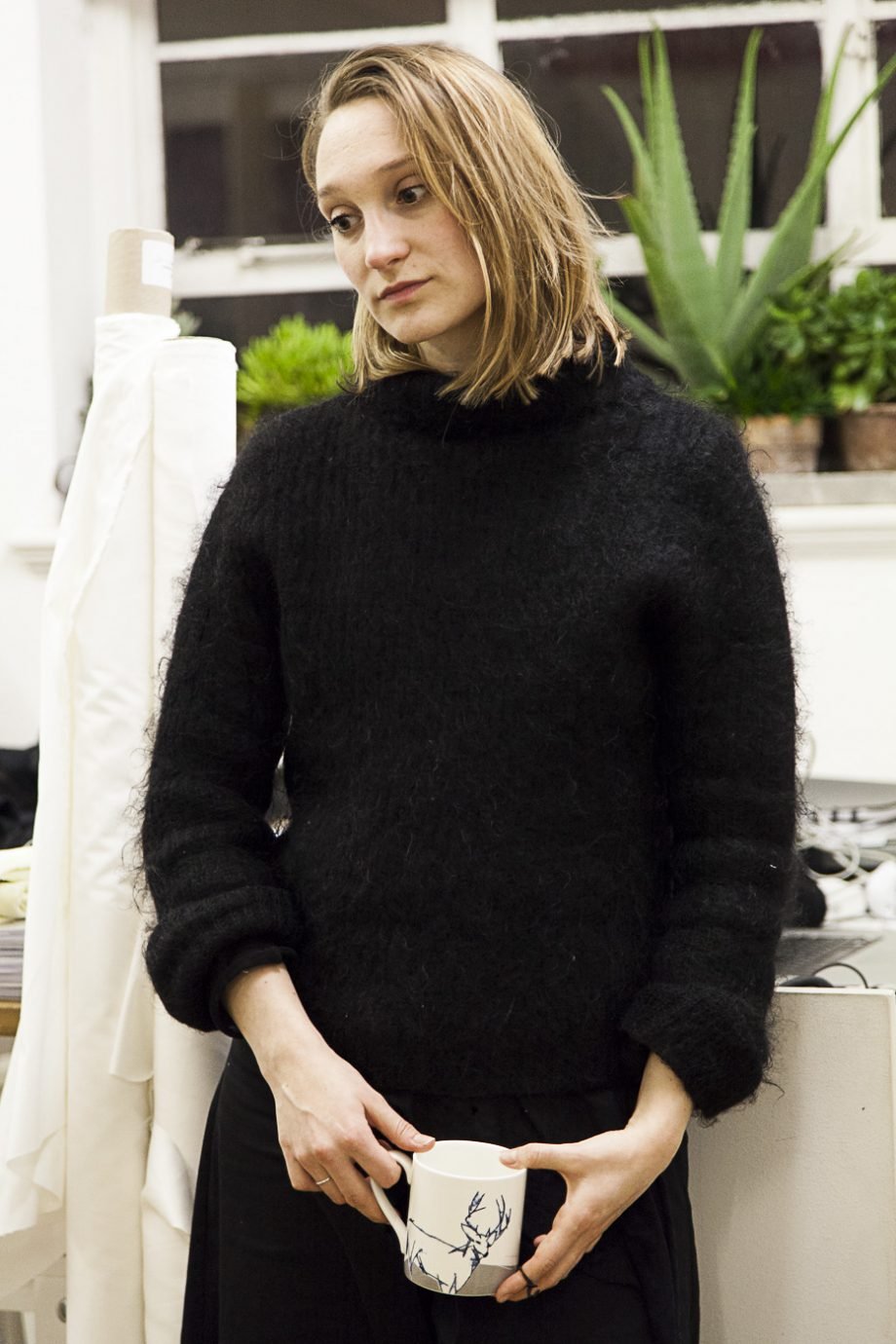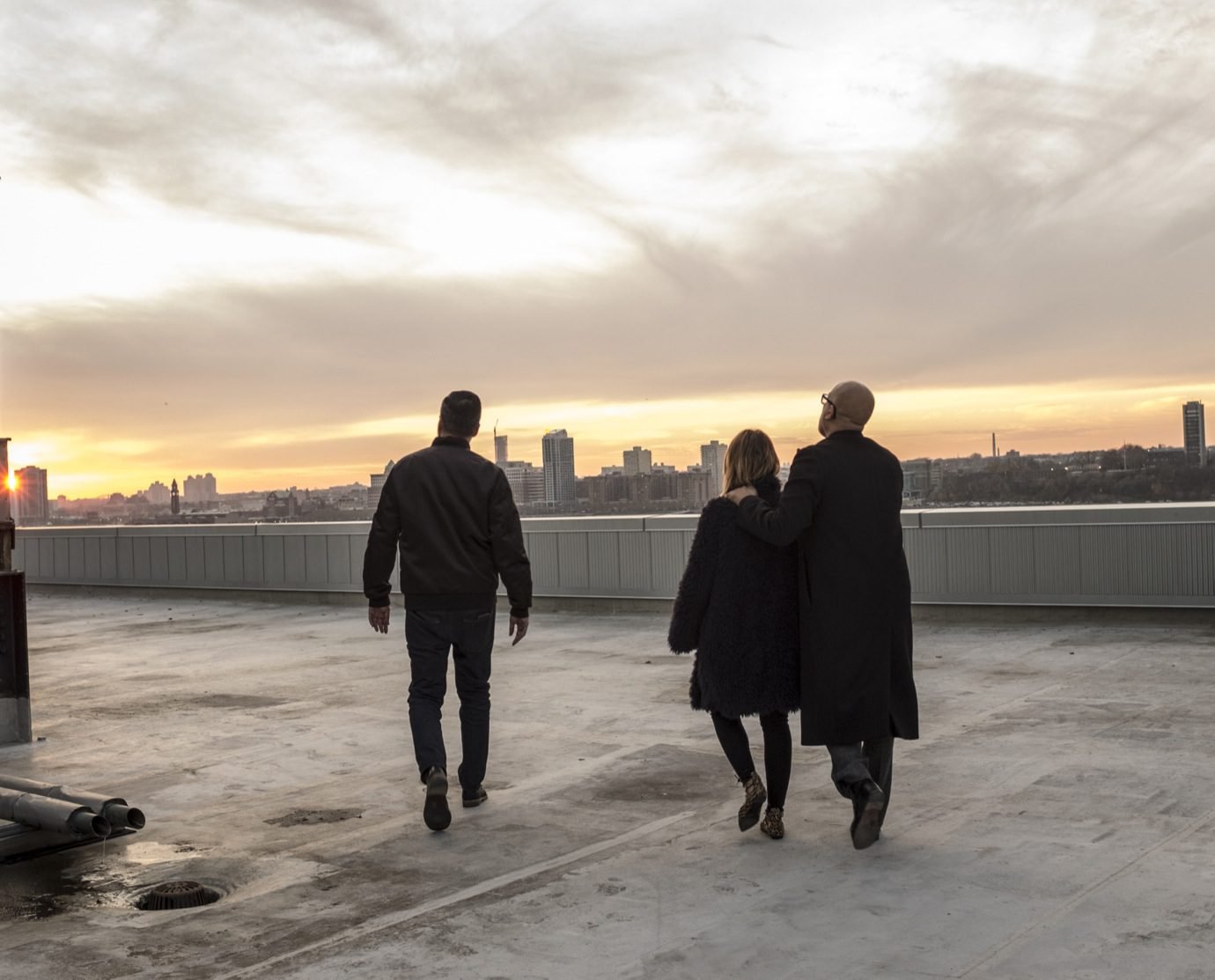How has Browns’ approach to sustainability evolved? Can you see a shift in the consumer responses to sustainable design?
For such a long time, there was nothing sustainable in the luxury sphere. I have been in the industry for 20 years now; I have seen 1970s flared trousers come back five times! But sustainability blows my mind, because there is so much innovation taking place. The deadstock issue has always been a concern for me. Since we started working with Conner Ives, it’s been incredible to see the customer response to repurposed clothes.
“It is fine to put yourself in an upper range price point, but only if the garment reflects the price in terms of making, details and finishings.”
We also have a partnership with the gown rental showroom, Armarium. Holli and I were frustrated with how beautiful dresses, which usually have a longer production process, only technically lived their full price for a month. So we decided to explore how to move these incredible runway pieces into a protective space. Rental is not necessarily the most sustainable solution, as there are things like dry cleaning and transport to consider.
However, we don’t want to use sustainability as a buying objective; we want it to be a core pillar of everything we do at the company. We are exploring better options on all levels, from packaging, dust boxes and the use of plastic bottles in the stores to the potential to use electric vans to transport our goods.
“Just because something is not what we are aesthetically looking for at the moment, doesn’t mean you are wrong in what you do. If someone makes the effort to come and look at your work, that means they see potential in you.”
There is currently a growing awareness about sustainability in fashion, but things seem to be moving very slowly. What do you think are the main concerns for buyers?
Last year, there was really no talk about sustainability in men’s fashion, so we had concerns about launching it because there simply wasn’t enough there in terms of sustainable options. Coming back the following season, it was in every showroom we went to. For so long, Livia Firth, EDUN and Stella McCartney were pushing that agenda completely alone. We did a green carpet challenge in Portobello a million years ago, and everything that came out was too bohemian, it wasn’t ‘fashion’ enough. So it’s interesting to see how fast things are going now. But obviously we also struggle to be perfectly transparent. How do you grow a business with a clean consciousness, as this potentially means putting more waste into circulation?
“We don’t want to use sustainability as a buying objective; we want it to be a core pillar of everything we do at the company.”
So where does the responsibility lie?
With everyone. I want Browns to be pioneering in sustainability but, instead of being guarded and protective, this has to be a global movement that everyone achieves together. We need to share new ways of manufacturing. Maggie Marilyn uses biodegradable plastic packaging and provides a source to anyone who wants it. Pretty much all young designers I see are looking at sustainability as something that doesn’t even need to be discussed, which is incredible. I was just in Copenhagen as one of the judges for the Designer’s Nest competition and nine out of ten designers used repurposed materials.
Some of the big brands are doing amazing things with sustainability, but they might not want to share their efforts in case they get accused of greenwashing. Meanwhile, businesses who look up to these brands won’t act, because they don’t think anyone else is. Greenwashing obviously exists, but I think it can be a hindering process to accuse sustainably progressive companies of greenwashing. That could be why things are taking so long. If you have a billion dollar company, you can’t change everything overnight. Considering how many people around the world rely on those companies, it would be a violation in itself. It’s unfortunate that companies are still sending stuff to landfill, but they’re probably trying to do something about that.
“The issue is overproduction, throughout luxury and fast fashion. Everyone is greedy, we produce too much and there’s a huge amount of waste.”
Do you think the reduction of trends could reduce waste?
Labels that do limited editions produce less waste and deadstock, because they sell out. I have never worked in fast fashion, so I don’t know the ins and out. Obviously the wastage in that part is even worse, but the luxury industry is also guilty.
As the luxury industry has increased the amount of seasons, you could say they are driving trends forward.
Having things delivered at different times of the year helps drive sales earlier on. So I don’t think it’s the drop. You can have 52 drops a year, that’s not the issue. The issue is overproduction, throughout luxury and fast fashion. Everyone is greedy, we produce too much and there’s a huge amount of waste.
So you don’t think that slowing down desire could somehow reduce the amount that we produce?
Technically, yes. But that’s a vicious circle that doesn’t even start in fashion. It starts in tech, on the streets, on social media. For me, the issue lies in how we re-educate people with these habits. A lot of people have started looking at wellness and health. They’re moving their attention away from how they dress to their homes, or their exercise gear. This just moves the problem along, it doesn’t actually overhaul how much is being produced. Then you can look at the stock that doesn’t get sold and it’s very rare that you get 100% sell-through. How is that material reused and repurposed? And that’s where a lot of innovation is happening, which is incredible.
“Made to order is a really interesting proposition, which means that customers would have to be willing to wait.”
One of the core issues about creating a sustainable fashion business is how to maintain growth without producing loads of stuff. What have you seen that could solve that?
There’s obviously massive business being done in re-selling. Influencers wear something once before discarding it, which fuels them to buy something new. Rental is growing for sure. I also think made to order is a really interesting proposition, which means that customers would have to be willing to wait. You can grow something whilst maintaining the same output. But you have to be able to create a desire for it, and that’s obviously the holy grail.
How do you define a conscious brand?
Every part of the business has to be considered. No label, not even Patagonia, can be fully sustainable. There’s so much work to be done on how to define this, it’s not just about the material. I went to a new showroom opening that had a sustainability focus, and they were promoting garments in organic cotton. But organic cotton is sometimes the worst because the water wastage is crazy. Something we’ve learned is that you can’t qualify as conscious if you’re not being transparent, even though you’re doing everything from shipping to production right. Today there’s probably even more confusion, as there’s no universal standard.
We learned that we needed to work with someone external, so we’ve consulted with the Good On You app. It’s a minefield, and this is something that the new brands are learning. They good-heartedly think that they are doing something right, and then work with someone who doesn’t fully qualify. We need to make those criteria more universal and set clear, golden standards for the fashion industry as a whole.
“You can’t qualify as conscious if you’re not being transparent, even though you’re doing everything from shipping to production right.”
If legislation proves impossible, would we need a separate institution to set standards and hold companies accountable?
In a dream scenario, there would be an independent fashion body that could set standards, so it would at least be clear what the standards are. Sitting at the Copenhagen Fashion Summit, it seemed like certain other countries might only be one or two years away from legislating on fashion. We need legislation, because fashion is one of the biggest contributors to pollution. But big actors like the US are so far away from legislating, since ‘someone’ doesn’t think the climate crisis is real… Although we will no longer be part of the EU, most of our production happens there. So if there was legislation in the EU, we would have to consider those changes too.
How do you think the UK fashion business will be affected by Brexit?
We still don’t know if there will be a good trade deal, or a bad trade deal done, or no trade deal. There’s been a decision that has stabilised the pound a little bit, but it could easily go into free-fall again. I wouldn’t even want to guess – it is too dark to think about. We’ve set up several different scenarios, because we have to have a contingency plan. I guess that’s the best we can do. Obviously, being European, I’m not happy about it.
Which conscious fashion brand do you think is the most exciting one at the moment?
I think the work that Ganni is doing is incredible. Chopowa Lowena is so beautiful, there’s nothing else like it out there. I can’t wait to see what Conner Ives is going to become. Obviously Duran Lantink – he’s the sweetest man in the world and such an artist. He has got many things lined up that I’m super excited about. Marine Serre, you can see her continuing to explore what sustainability is, and being really transparent about it as well. There are so many examples now. People are constantly exploring different innovations and materials. It’s so exciting!










